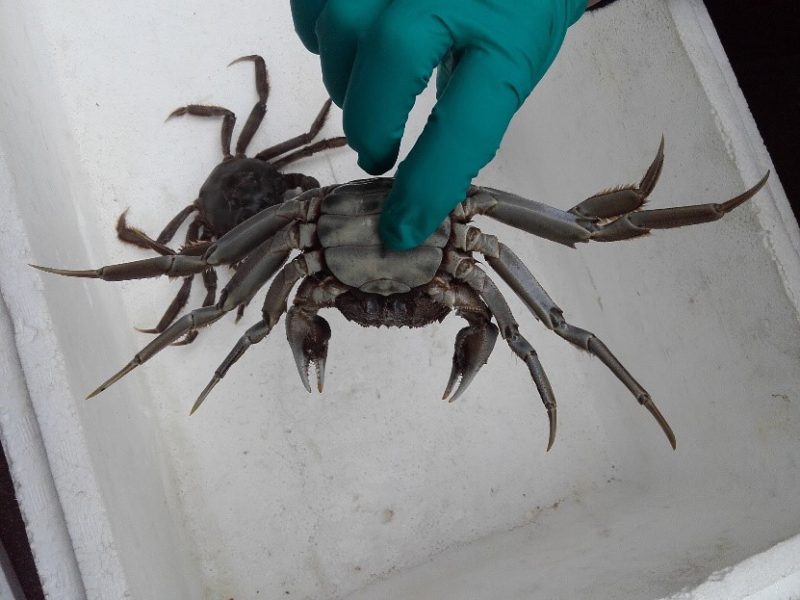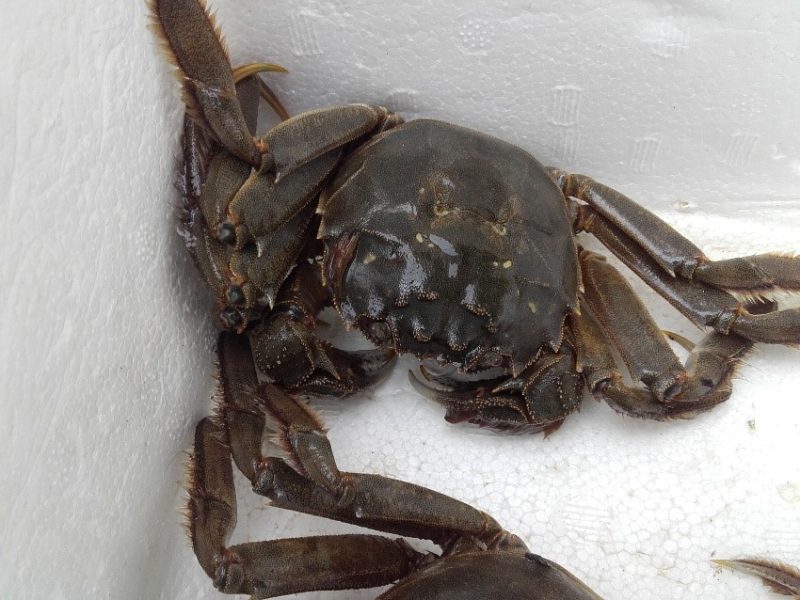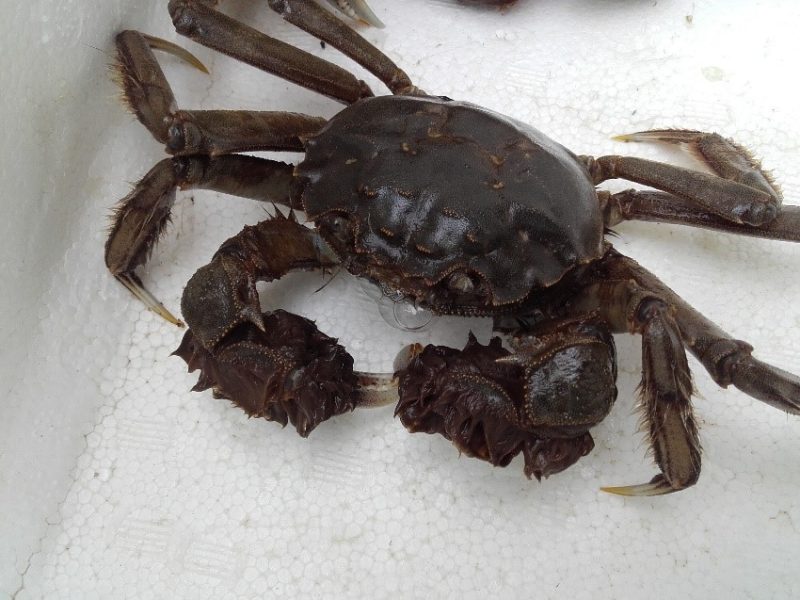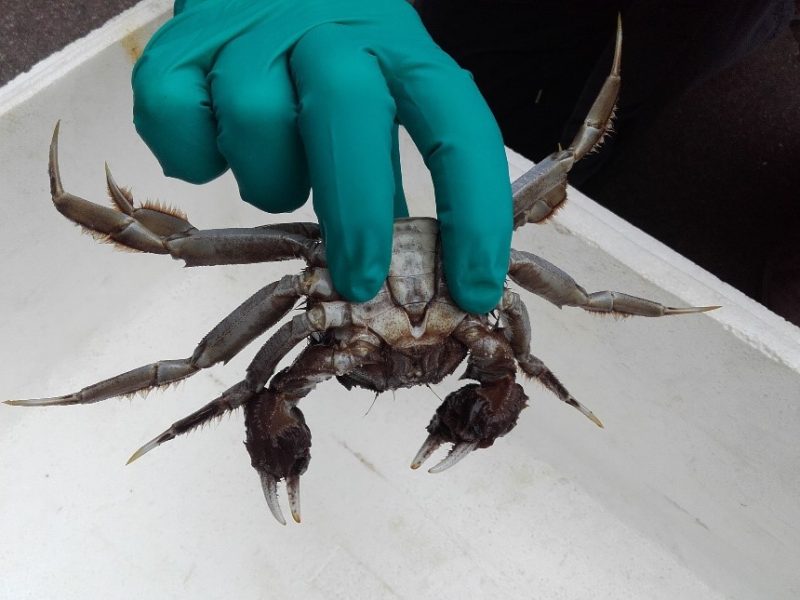Press Release
Morecambe Bay Chinese Mitten Crab
NWIFCA now has firm evidence of adult Chinese Mitten Crab (Eriocheir sinensis) in Morecambe Bay. NWIFCA scientists have been carrying out quarterly surveillance and monitoring surveys for this invasive non-native species on the Heysham Flat and Foulney mussel beds since 2018. None had been found in this time.
NWIFCA Senior Scientist was contacted by a fisherman fishing with nets on two local rivers in Morecambe Bay. He reported having caught and released an adult Chinese Mitten Crab in his net when fishing near Skerton Weir on the Lune. On Monday 28th September he reported having caught two adult Chinese Mitten Crab in his net while fishing the Keer, and had retained these crabs alive. These rivers are both on the eastern side of the Bay running through Lancaster and Carnforth respectively.
NWIFCA collected the crabs, removed them carefully to their facilities ensuring good biosecurity measures, photographed and froze them. A positive identification was made. They are excellent specimens of an adult male and an adult female. The furry mittens are distinctive. Chinese Mitten Crabs can also be distinguished from native shore crabs (Carcinus maenas) by four notches on the carapace between the eyes instead of three, and also have a squarer carapace than shore crabs.
These crabs were caught on the way out of the estuaries which follows the understanding of their life cycle of adults migrating to brackish and marine waters to breed during the autumn.
Chinese Mitten Crab cause damage to river walls through their burrowing behaviour and are considered a risk to infrastructure and biodiversity in the UK.
All fishers and gatherers should implement good practice surveillance and monitoring during fishing, sorting and bagging up of catch. Look for both large and small (juvenile) crabs. Members of the public are asked to keep a look out for them.
IF ANY CHINESE MITTEN CRAB ARE FOUND – isolate them immediately, taking care with berried females not to shed any eggs, retain them live and report immediately to NWIFCA.
In the meantime scrupulous biosecurity practices are encouraged, using ‘Check, Clean, Dry’. View Defra Check, Clean and Dry Poster (external pdf)
Mandy Knott
NWIFCA Senior Scientist
9th October 2020
Photographs




Notes to Editor
- Chinese Mitten Crab are listed under the Invasive Alien Species (Enforcement and Permitting) Order 2019 which came into force on 1st October 2019.
- Under this Order it is an offence for anyone to release Chinese Mitten Crab in to the wild.
- Populations known to have been established within the NWIFCA District for some years are in the Dee Estuary and the Mersey Estuary (recorded by EA since 2008 and 2009 respectively).
- Occasional sightings of individual adults had been recorded in the Duddon Estuary, the most recent one being from 2012. This was verified by the South Cumbria Rivers Trust at the time.
- An unconfirmed report was received from the Walney Channel in 2018. NWIFCA instigated scientific survey of mussel beds in the Bay following this report following good practice.
- Chinese mitten crabs prefer to moult in freshwater but are unable to lay eggs at low salinities. Adults therefore migrate down rivers in the autumn to gather in estuaries to breed. Once eggs hatch in spring, juveniles and adults migrate back up the river. They can travel large distances and have been recorded up to 1,500km from the sea in their native China. They are also able to cross dry land and have been found in isolated freshwater ponds.
- Its ability to travel large distances up river systems and cross dry land means that all waterbodies in Britain have the potential to be invaded.
- Chinese mitten crabs burrow into river banks, affecting their integrity and so can cause considerable damage. It has been placed on the IUCN 100 of the world’s worst alien species list.
- Further information on Chinese Mitten Crab and other marine invasive non-native species can be found at www.nonnativespecies.org. Visit www.nonnativespecies.org (opens in a new window).